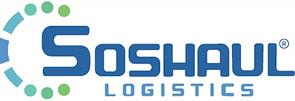What Is A DVIR? When Do I Need To File One? Let's DVIR In!
- Dr. Sean Goffnett

- Aug 10, 2023
- 6 min read
Updated: Oct 5, 2023
Before you even go there, I can tell you that DVIR is not some kind of “intelligent” DVR. You may have heard rumors but AI and DVR didn’t have a baby. In fact, DVIR has nothing to do with smart devices, scheduled recordings, and streaming services. And let’s just leave VCR and DVD out of it.

What is a DVIR?
DVIR stands for Driver Vehicle Inspection Report. DVIR is a formal record of inspection on a commercial motor vehicle (CMV) that a driver carries out each work day. The Federal Motor Carrier Safety Administration (FMCSA) requires that drivers make sure that their vehicle and equipment are in safe operating condition before getting on the road (392.7(a)). To meet this requirement, drivers perform pre-trip and post-trip inspections. If there are any defects or deficiencies discovered during their inspection, then a Driver Vehicle Inspection Report (DVIR) must be filled out (396.11; 396.13). The next driver must sign to acknowledge that the proper repairs have been made and any major issues have been corrected and are now resolved.
Why is the DVIR so important?
As mentioned in other blogs, and because it can’t be overstated, vehicle inspections are critical for the safety of not only yourself but for others on the road. This is a big reason why anyone involved with the inspection, upkeep, or maintenance of vehicles must do their part and comply with the rules and regulations of 49 CFR 396. A motor vehicle shall not be operated in such a condition as to likely cause an accident or a breakdown of the vehicle. It’s about compliance and safety!
The U.S. Motor Carrier Safety Assistance Program (MCSAP) inspectors are out on the roadways conducting roadside inspections of CMVs to determine if the CMVs – and drivers – are meeting the requirements of federal regulations concerning motor carrier safety and hazardous materials. In fact, nearly 3 million roadside safety inspections are carried out each year in the U.S. Completing driver inspections and DVIRs will help roadside inspections go more smoothly.
If you’re always on top of things, in terms of inspections, maintenance, and safe driving, then it’s likely that you will start to feel like DVIRs are unnecessary and just another government hoop to jump through. When that feeling starts to creep in, remind yourself and other drivers that your actions save lives. The countless inspections and driver reports have done just that – saved lives! Plain and simple! Thanks to the actions of drivers, inspectors, and mechanics, these individuals (you!) help prevent thousands of accidents, injuries, and fatalities each year. This alone is proof that inspections and DVIRs are critical and need to be done. If that’s not enough, then imagine the consequences of not doing your job in a safe and professional manner. Imagine being in an accident that you caused because you think inspections and maintenance are not a big deal. Imagine the consequences.
When are inspections required or performed?
It's a necessity to conduct an inspection at the start of a shift, each work day, after 10-hour breaks, or instances when you switch to different equipment, for example. Inspections take place at least two times per workday, but they can happen more frequently and whenever necessary or required by company policy. Full or partial inspections can take place whenever the driver stops, for example. Normally, an inspection will take place before a driver operates a CMV and after the driver is finished operating the CMV for the day. The two categories are pre-trip inspection and post-trip inspection. In short, pre-trips must be conducted prior to departing, and post-trips must take place at the end of each day.
Pre-trip inspection
Before a driver begins operating a CMV, they need to review the previous DVIR carried out on the CMV. As stated above, if there were any defects or deficiencies documented in the DVIR, the driver has to review them and sign off to verify and confirm that all major issues have been repaired and the vehicle is in safe order and roadworthy.
Post-trip inspection
The other category or type of inspection is the post-trip inspection. This vehicle inspection is carried out once the driver is done operating the CMV for the day. If a driver operates multiple vehicles in a day, then each vehicle requires proper inspection and completing DVIRs on any vehicle with recordable problems.
PRO TIP - The DVIR, this report, is filed only if defects or deficiencies are discovered during an inspection.
What must be checked in an inspection?
When performing inspections, it’s more efficient and effective if you or your drivers use a checklist. Items that are inspected may vary or change over time based on type of vehicle and equipment or business operations (e.g., intermodal) or because of changes in regulation. However, the report typically includes, but is not limited to, the following parts and accessories:
Service brakes including trailer brake connections;
Parking brake;
Steering mechanism;
Lighting devices (lamps, indicators) and reflectors;
Tires, wheel, and rims;
Horn;
Windshield wipers;
Rear vision mirrors;
Coupling devices;
Wheels and rims;
Safety and emergency equipment
Make sure that these items are in good condition and proper working order. Look at fit and function. Check for any damage or deficiencies, such as dirt, grime, cracks, splits, tears, or leaks. Regulation states that the DVIR must “list any defect or deficiency discovered by or reported to the driver which would affect the safety of operation of the vehicle or result in its mechanical breakdown.”
Along with brakes, tires are one of the most frequently occurring violations cited during a roadside inspection. Regulation states that front tires shall have a tread groove pattern depth of at least 4⁄32 of an inch (or 1/8 of an inch) when measured at any point on a major tread groove Tire tread depths less than 2/32 of an inch (or 1/16 of an inch) (393.75). Just like brakes, tires are incredibly important in that they should be examined as part of pre-trip inspections, en route inspections, and post-trip inspections. Any issues must be noted in the DVIR and corrected before placing the vehicle back in service.
What happens if there’s an issue found during inspection?
Report it, take corrective actions, certify that the issue has been resolved, and follow up with the driver to confirm there is no longer an issue. You want to be back on the road as soon as possible. So, if the driver discovers an issue during an inspection, the driver must report the problem, document it in the DVIR so it can be addressed. Remember the driver must sign the DVIR to attest that the inspection has been conducted. In terms of corrective actions, the carrier must sign the DVIR and certify that the defect or deficiency has been repaired or that repair is unnecessary before the vehicle is operated again. If the DVIR doesn’t indicate that the noted defect has been repaired, the driver is prohibited from operating the CMV. The carrier must keep the DVIR (Driver Vehicle Inspection Report), the certification of repairs, and the certification of the driver's review for three months from the date when the written report was prepared.
The DVIR form should include the date of inspection, driver/inspector name, address, vehicle information (unit number, license plate number, etc), trailer information, the signature of the driver/inspector who completed the DVIR, the signature of the person responsible for corrective action, such as mechanic, fleet manager, transportation supervisor, or safety manager, and the signature of the driver who inspects and certifies the DVIR before the CMV is placed back in service for next trip. Non-compliance can be costly, if not deadly. Penalties can be in the thousands of dollars, and you will take a hit to your CSA score.
Taking the time to conduct proper vehicle inspections can lower your risk of being cited during a roadside inspection and being put out of service. These types of violations can damage your driving record. It can even impact your insurance coverage and premiums. Properly conducted driver vehicle inspections can help you save time and money. Keeping up on inspections and maintenance keeps you rolling and keeps everyone safe.
Download our checklist templates for conducting Pre-Trip, En-Route, and Post-Trip Inspections and preparing Driver Vehicle Inspection Reports. Download today!
Ready to START, DRIVE, & ACCELERATE your trucking business? Check out our course here!

Interested in being notified when more free resources are available? Subscribe down below and you'll be the first to know!
Soshaul Logistics LLC and its affiliates do not provide tax, legal or accounting advice. This material has been prepared for informational purposes only, and is not intended to provide, and should not be relied on for, tax, legal or accounting advice. It is meant to serve as a guide and information only and Soshaul Logistics, LLC does not assume responsibility for any omissions, errors, or ambiguity contained herein. Contents may not be relied upon as a substitute for the FMCSA's published regulations. You should consult your own tax, legal and accounting advisors before engaging in any transaction or operation.




Comments